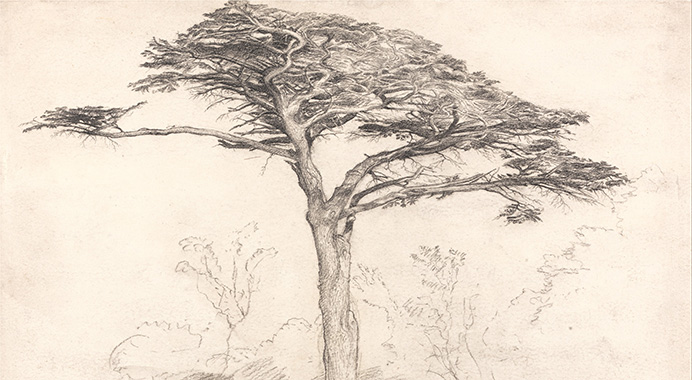You don’t have to be the next da Vinci or Van Gogh to start an art journal. Art journaling combines writing with sketching and painting and can be a great way to record the memories of a new destination. With a few simple techniques and the right tools, art journaling can become a fun, new way for anyone to explore the depths of their own creativity and to document their travels. 
Find a Journal
To ensure that your art journal withstands both the tests of time and your suitcase, you’ll want to consider two factors:
First, the paper. Art journals should have heavyweight, acid-free pages. Acid can disintegrate paper and discolor photos over time, especially if the paper is exposed to light or heat, ruining your hard work and memories. And heavyweight paper works well with any of the mediums listed below.
Second, the binding. Look for an art journal that has a hardcover and a way to keep itself closed. Durability is key when packing your journal for daily excursions. Some journals have an elastic strap attached to the binding that easily snaps tight, securing all the pages. You may also want to consider using a landscape-bound journal because this style will stay open better as you draw or paint.
Pick a Medium
There are several mediums to consider when creating a travel kit. Before your trip, test out a few materials to see what you’re most comfortable with.
Pencil: Pencils are great for sketching. You can always erase, so you don’t have to worry about making a mistake. When choosing a pencil, remember that the softer the graphite is, the darker the mark will be.
Ink: While ink doesn’t provide the forgiveness of a pencil, it may enable you to commit to what you draw and can provide stronger, more definite lines. Pens are also low mess and low maintenance.
Oil Pastel: Oil pastels offer vibrant colors and require less maintenance than oil paints. They are also easy to blend. These pastels are similar in shape and texture to a crayon, but they offer far richer hues and allow for more advanced techniques.
Watercolor: While watercolors may be messier than other mediums and require a source of water, the extra effort is often worth it. Watercolors are very forgiving and are a fantastic addition to ink drawings. For less mess, try watercolor pencils, which allow you to draw now and finish with water later.
Pack a Bag
A clear cosmetics bag with a zipper is a simple but effective way to transport your supplies. You can easily throw the bag into your daypack, while keeping your supplies protected from the elements. And it’s easier to find the pen or pencil you want when you can see through the sides of the bag. To ensure nothing is broken en route, pack your bag in your carry-on if possible.
Draw a Memory
Now that you’ve prepared your supplies, it’s time to get creative. While art journaling may sound intimidating at first, the goal is not to replicate like a camera but to capture your memories in a unique way. Focus on the simple shapes and lines of what you see. Draw anything and everything, from the mountain across the lake to the ticket stub in your pocket. Most importantly, don’t be afraid to make a mistake. Let your creativity be your guide.
Move beyond words and photos on your next excursion by preserving your memories of great destinations in ink.
—Rachel Peters and Julie Ogborn
Photo credit:
Samuel Palmer


I love that this article describes art journaling as a way of capturing your environment through your own eyes. This is a good idea and would be fun to try sometime.
Enjoyed reading. Thanks.
This is really some awesome advice. Keep it up, my colleagues would love this.
I liked this article because it was detailed for those who really don’t know much about art supplies. It appealed to me in the photo example, the unassuming thoroughness, and the encouragement to try it out.